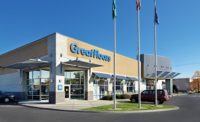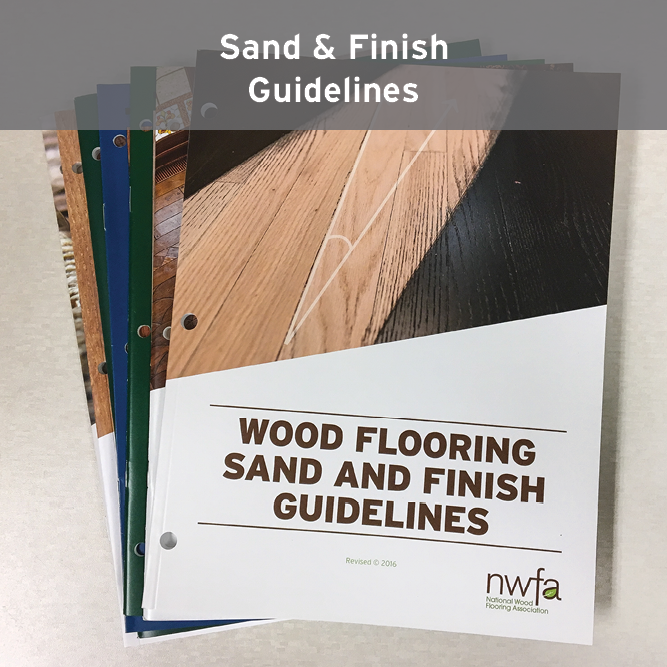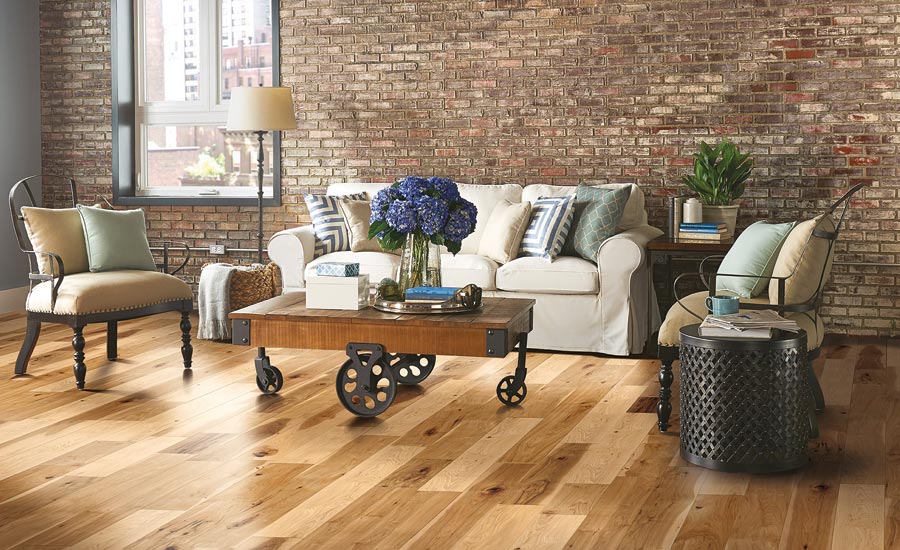A Conversation with AHF Products CEO Brian Carson




Brian Carson was recently named president and chief executive officer of AHF Products, what formerly had been the hardwood flooring unit of Armstrong Flooring. We had an opportunity to sit down with Brian recently, and some of the excerpts of that conversation are detailed here. You can listen to this conversation in its entirety in our podcasts section. Below are segments of that conversation.
TF: Talk about the sale of AHF Products how it happened.
Carson: I can’t really speak to why they made the decision, but I can tell you I sure am glad they did. I think that AHF, the hardwood business that was sold to American Industrial Partners at year end, was a fantastic acquisition for American Industrial Partners, for sure. American Industrial Partners are fantastic operators. I have met the ownership. They buy businesses where they see great potential in improving the operating performance and product lines, and they have extensive experience in the hardwood business. In fact, in their portfolio is Northwest Hardwoods, and they also own the cabinet business that was an Armstrong spin-off about a decade ago, which they have grown fantastically. So, here you have owners that know the hardwood industry extensively. Although hardwood flooring is new to them, they’re an operationally oriented company and an investment-oriented company and they look to grow these businesses that they acquire. It really was a match made in heaven. And it’s a real advantage for me to be leading a business where its people get up every day with a singular focus to produce the best hardwood styles, the best innovation, the best values for our consumers and our channel partners. And I’m convinced that there’s an enormous opportunity and a void in hardwood leadership. And our business has a stable of brands: Bruce, HomerWood, Capella, T Morton and all of the brands. There is not a stable of brands in the hardwood industry that is as strong or even close. And our plant capabilities, our investments and our ideas are to improve both. I think we have a fantastic opportunity to grow this thing and to really create value for our customers.
TF: In November, at about the time of the sale of its hardwood unit, Armstrong noted that it has a strong position in wood but it said that it’s seeing the wood segment underperform other categories. While wood represented some 40 percent of the company’s sales in 2017, it added only 10 percent of the company’s earnings and it consumed 50 percent of the company’s attention. That sounds like a dire situation.
Carson: Again, I can’t speak to an AFI situation, but what I can tell you is the hardwood business is going to consume 100 percent of our attention, and it’s going to be 100 percent of our sales and 100 percent of our earnings, so we’re going to be excellent in this product. Our team sees an enormous opportunity to reinvent the hardwood business—to remind consumers that at the end of the day this is the product that they aspire to buy and that, in many cases, when they’re buying something else, they’re settling for something else. If we can solve this, which I believe we can, some of the reasons why people settle for the imitations, they’re going to come back to what they wanted to begin with. They’re going to buy Bruce and they’re going to buy HomerWood, Capella and our brands. I wouldn’t be here if I didn’t see the opportunity to grow this thing for sure. I think you’re going to hear more about those ideas as we go through the year. I know you will. So, you just have to stay tuned on that.
TF: Do you foresee changes in AHF’s manufacturing facilities, perhaps consolidating some, closing some, or other kinds of changes among manufacturing facilities?
Carson: Do I see changes—absolutely yes. I’ve been here a week. We’ve already approved some investments to go into two of our domestic manufacturing facilities. And I see opportunity to grow this. So, will we invest in the facilities? Will there be changes? Yes. But really those changes are going to be geared around the capability for better styling, better features and benefits. How do we build better storytelling in our marketing? How can we create better value products and produce them at a better value? So, there are going to be changes and they’re going to be investments, but those are all going to be around four betters, better styling, better features and benefits, better storytelling and better values.
We’re here to grow the business. And so, there’s certainly going to be changes, but there’s going to be changes for the good.
TF: Talk about problems that the wood flooring business is seeing from wood look-a-likes and LVT. I suspect that’s eating away at the lower end of the wood business.
Carson: That has happened, and top-down water-resistant and bottom-up water-resistant has become more important as consumers have been introduced to the fact that they could have products that are more resistant to spills. And as you know, construction continues to move more to fast-track construction—being able to get the products in faster without acclimation. As a result, there are reasons why the trade has shifted to other products and why the consumer has shifted to other products. But at the end of the day, when a consumer sets out to buy a house, or when somebody sets out to remodel their house, you know 30 years ago they wanted hardwood, 20 years ago they wanted hardwood, 10 years ago they wanted hardwood, and right now they still want hardwood. If we can address the issues of why people choose other products, I’m convinced they’re going to go back to the product that they really wanted all along. There will always be new products. Twenty years ago, it was laminate; now, it’s vinyl plank products, and there’s is going to be a new one after that. Wood, however, is an enduring category. It’s not going anywhere. It could benefit from some excitement back in the category and it could benefit a whole lot from leadership in the category. With our brands, our manufacturing capability, our distribution and our reach in the market, really we are uniquely positioned to provide that leadership. Leaders lead. We’re going to provide that leadership that will breathe new life into the category.
TF: Do you think consumers basically walk into a retail store wanting wood, and what role does storytelling play in the sales process?
Carson: I do. If you gave your significant other a cubic zirconia ring rather than a diamond ring, they may look the same, but they’re not the same. You don’t feel the same, so the real deal matters. It does, particularly in a flooring investment.
The biggest investment you make in your life is your house. And one of the biggest investments you make in your house is your flooring. And there’s an emotional purchase there as well. Just like there’s an emotional purchase in that ring. I think genuine matters.
Some of it is reminding folks that this is genuine, the real deal, and that some of the things that maybe caused consumers to have bad experiences 10 or 20 years ago with wood—whether it was water or scratching—have been solved. So, you can have the real stuff and you can get the attributes of some of the new stuff. I think that when that story gets told that way, you’re going to have a whole lot of people that are going to return to what they wanted to begin with.
TF: You had mentioned AHF brands. Do you see changes within this brand structure? And where do you see AHF standing within the U.S. hardwood flooring sector?
Carson: AHF is at the apex. It’s the leader. It’s got the best brands, best manufacturing capability. I think that position in the market is a fantastic position. I think we’re also blessed to have the best portfolio of brands in the industry, Bruce, Capella HomerWood, T Martin, and Robbins—it goes on. And Bruce in particular, that’s the flagship brand. It’s a brand that has strong trade awareness but also consumer awareness, and I think we can do an even better job breathing life into that brand, and we will do that. But I also am a believer in brand hierarchy. There has to be a hierarchy of brands as you move up the price point. And we have a stable of brands, and we will be repositioning some of them to create a more logical hierarchy for our dealers to trade to consumers and retail partners to trade the consumer up.
But I also think that there is a place for sub-branding under the master brands to help differentiate the distribution channels—to differentiate retailers more. So everybody in the supply chain can make a whole lot of money selling our products, too. We have a lot to work with at our disposal.
TF: So, then I shouldn’t be surprised if I see some new brands?
Carson: It’s my job to surprise you, so you will have to stay tuned on that.
TF: Looking at LVT and other wood look-a-likes, I suspect that erosion to real wood has been at the lower end. How has that played out over the last couple of years, and are things getting worse?
Carson: In my view, wood has been impacted more at the lower end, but I don’t think that’s an issue of desire. If somebody is in an entry-level house, why wouldn’t they desire to have hardwood? We can get the value proposition right if we can innovate some of the things that make hardwood more difficult to install and make it easier and quicker in fast-cycle environments. When that person goes into the house, they know if it’s real wood. They know, and they would like to have real wood. We need to make it better for the channel, the builders, the retailers, the contractors to want to provide wood. At the end of the day, I think it’s still the product that the consumer wants, so we’re out to solve those issues.
TF: Sounds like a lot of reeducation.
Carson: It’s not only a healthy education, it’s also real innovation and coupling that with great storytelling to tell the story that you can have the real stuff without any issues associated with the real stuff. And why wouldn’t you want it? I’m excited about it, and I see tremendous potential in this business.
Looking for a reprint of this article?
From high-res PDFs to custom plaques, order your copy today!











